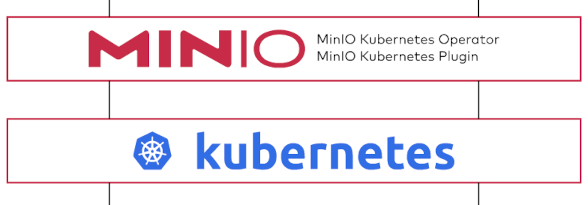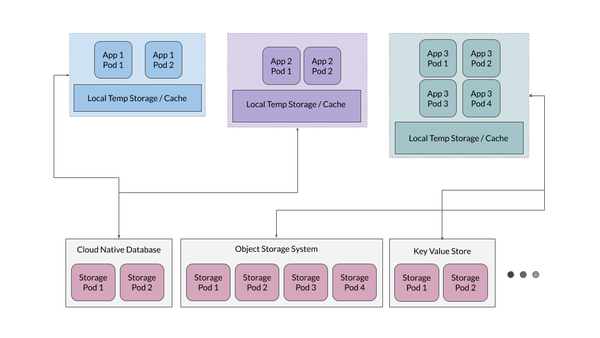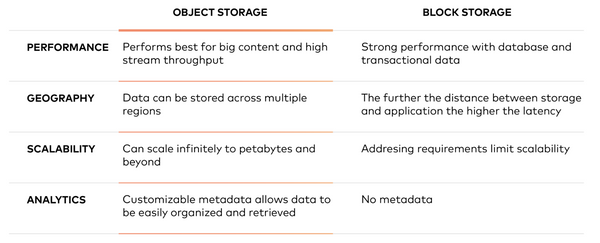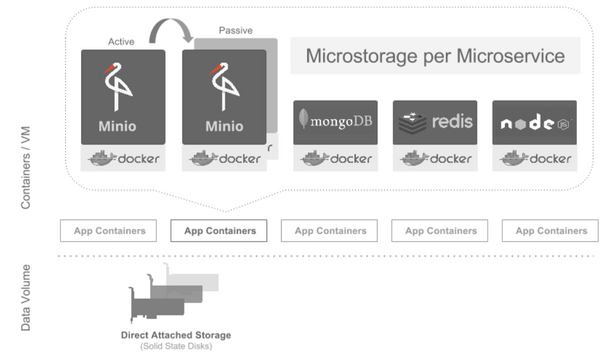No More Default Rebalancing of Object Storage!

MinIO server pools enable rapid expansion without the downtime and risk of rebalancing.
Read moreA collection of 55 posts tagged with "Architect's Guide"

MinIO server pools enable rapid expansion without the downtime and risk of rebalancing.
Read more
The line between hybrid cloud and multicloud is blurry at this point. The hybrid cloud is certainly more expansive in its definition (public, on-prem, edge). The multi-cloud generally refers to multiple public cloud. What makes it blurry is that the cloud is a mentality - not a physical location. As a result, we see the terms used interchangeably these days.
Read more
Lots of object storage companies like to talk about scalability while tossing around terms like exabytes and “infinite.” Unfortunately, many of the terms used to describe scalability make grandiose and misleading promises that don’t help enterprises build an effective storage platform. Claims made around the simplest use case, static archival data, aren’t translatable to the entirety of use
Read more
MinIO for Kubernetes promises portable and performant object storage for DevOps and IT teams.
Read more
As we ease into 2021, there are a few technology vectors that are dictating the conversation for IT architects. The dominant one is Kubernetes. Related, and quickly becoming “standard,” is the hybrid cloud. The challenges inherent in an architect's role are only compounded when planning for the hybrid cloud. First, it is new and marketing has a tendency
Read more
Cassandra is a popular, tried-and-true NoSQL database that supports key-value wide-column tables. Like any powerful tool, Cassandra has its ideal use cases - in particular, Cassandra excels at supporting write-heavy workloads, while having limitations when supporting read-heavy workloads. Cassandra's eventual consistency model and lack of transactions, multi-table support like joins, subqueries can also limit its usefulness. However, using
Read more
Introduction Document management is a core requirement for all sorts of regulated institutions - finance, telecom, healthcare, government and others. These institutions need to manage and retain an ever growing number of documents and regulatory guidelines often require these documents to be stored for a very long term (7-10 years). Take for example, KYC (Know Your Customer) documents. Anyone starting
Read more
The promise/allure of the public cloud is based on the concept that it is elastic. One can, with little effort, scale up workloads and, if desired, scale down those same workloads. We have written on this subject before - from the perspective of what workloads to consider as you evaluate what to take to the public cloud and what
Read more
Aaron Tilley of the Wall Street Journal has an interesting piece [https://www.wsj.com/articles/coronavirus-pandemic-forces-businesses-to-confront-cloud-computing-costs-11595849519] (paywalled) today that speaks to one of the challenges that businesses are facing on the pandemic related technology front. The net of it is that companies are spending more and more on cloud costs, sometimes independent of their business outcomes. It doesn'
Read more
MinIO supports a complete object locking framework offering both Legal Hold and Retention (with Governance and Compliance modes). Object Locking functionality is a requirement for many regulated industries from financial services to healthcare. Lifecycle management is an increasingly critical element in the data ecosystem. Data is the primary asset in most organizations at this point - more so than the
Read more
Kubernetes has fundamentally altered the traditional application development and deployment patterns. Application development teams can now develop, test and deploy their apps in days, across different environments, all within their Kubernetes clusters. Previous generations of technology typically took weeks if not months. This acceleration is possible due to the abstraction that Kubernetes brings to the table, i.e. it deals
Read more
As a general rule, when people think about object storage they think about one thing — the price per TB/GB. Though a legitimate cost metric, it has the effect of making object storage one-dimensional and relegates it to archival use cases. Further, it distorts the value associated with this increasingly important part of the enterprise tech stack. Frankly, the legacy
Read more
For Cloud Native, Architecture Matters The term ‘cloud native’ is widely used in technical circles but doesn’t have a particularly clear definition. The confusion lies in the fact that being ‘cloud native’ has little to do with the environment your application is deployed to—the term is equally applicable to on-premise or the public cloud. Rather, the term refers
Read more
In the first part of this two post series, we’ll take a look at how object storage is different from other storage approaches and why it makes sense to leverage object storage like Minio for data lakes.
Read more
One of the fundamental requirements of microservice is that application containers become stateless. However the states still need to be stored elsewhere, as in databases, object storage, session files, cookies, cache, etc. Microstorage is emerging as a new architecture to address the storage scalability for microservices. Microstorage inherits the idea from microservices that “only small things scale”. Scale-up is not
Read more